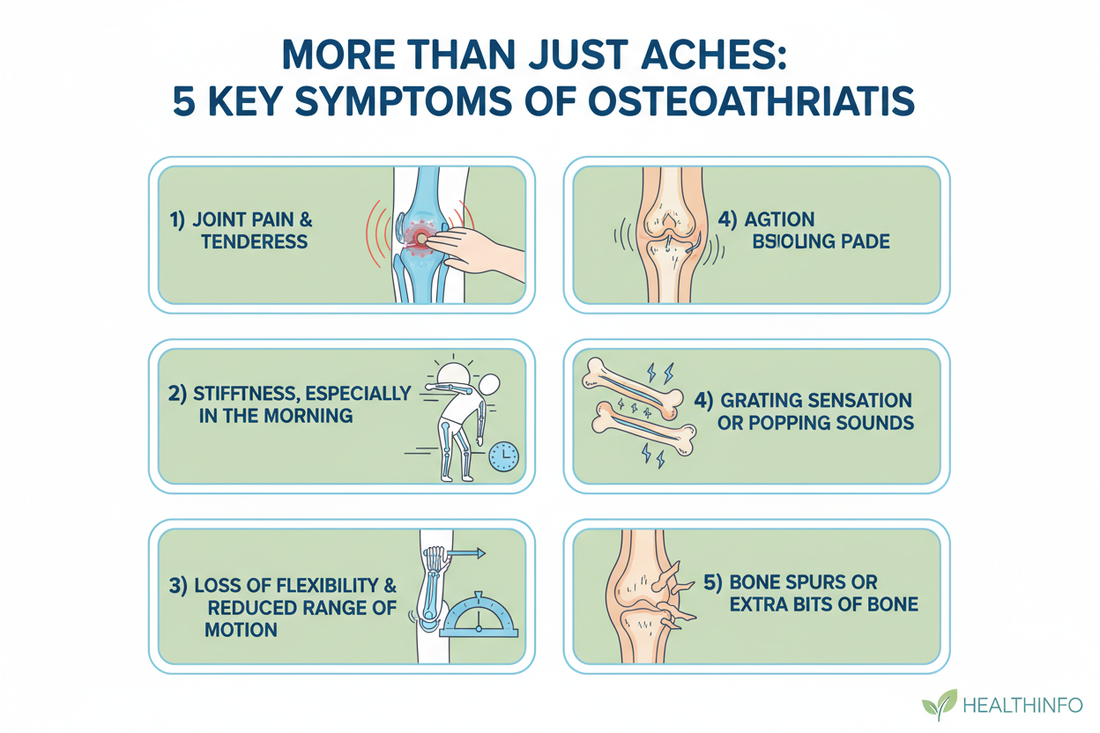
More Than Just Aches: 5 Key Symptoms of Osteoarthritis
Share
Often referred to as the wear-and-tear disease, Osteoarthritis (OA), or "calcification" as it's commonly known in the knee, is a condition that affects millions. While pain is the most recognized sign, (OA)involves a spectrum of symptoms that impact mobility and quality of life. In the early stages, discomfort might come and go, often linked to activity. However, as the disease progresses, these signs become more persistent. Recognizing these early and late symptoms is key to managing (OA).
1. Joint Pain That Worsens with Activity

This is the most common and important symptom. In the beginning, the knee pain might be intermittent—appearing after periods of prolonged use or strenuous activity (like standing for a long time or exercise). As the cartilage wears down, the pain becomes more constant and severe, persisting even when the joint is at rest.
2. Difficulty with Squatting and Standing
![]()
Osteoarthritis significantly impacts the ability to perform weight-bearing movements that require deep knee bending. You may experience:
Trouble Squatting: A noticeable increase in pain or stiffness when attempting to squat down.
Difficulty Standing Up: Trouble or pain when moving from a seated or crouched position to a standing position, often requiring assistance or careful bracing.
3. Joint Locking, Catching, or Crepitation (Sounds)
![]()
As the joint surfaces become rough and irregular due to cartilage loss, movement can become uneven, leading to mechanical symptoms:
Stuck or Locking Sensation: The knee may feel momentarily "stuck" or lock up during certain movements.
Crepitation: A tell-tale sign is the audible or palpable grinding, clicking, or crunching sound (known as crepitation) that comes from the joint when you move it.
4. Pain That Increases with Movement (Stairs and Walking)

The pain is often directly related to the amount of pressure placed on the joint. Therefore, activities that engage the knees aggressively tend to amplify the discomfort:
Walking: Pain increases after walking a certain distance.
Stairs: Going up and down stairs becomes particularly painful and challenging due to the increased load placed on the knee joint.
5. Occasional Swelling in the Knee

While not always present, swelling (effusion) is a symptom that signals inflammation within the joint.
Cause: The joint may swell as a reaction to irritation or fragments of cartilage breaking off and irritating the joint lining.
Appearance: The knee may look puffy or feel warm to the touch. This swelling is typically intermittent, flaring up after periods of heavy use and subsiding with rest.
Conclusion: Early Recognition is Key
If you recognize these symptoms, particularly chronic pain that changes with activity, difficulty moving, or sounds coming from your joints, it is essential to consult a healthcare professional. Early diagnosis and management are vital for slowing the progression of osteoarthritis and maintaining mobility and quality of life.